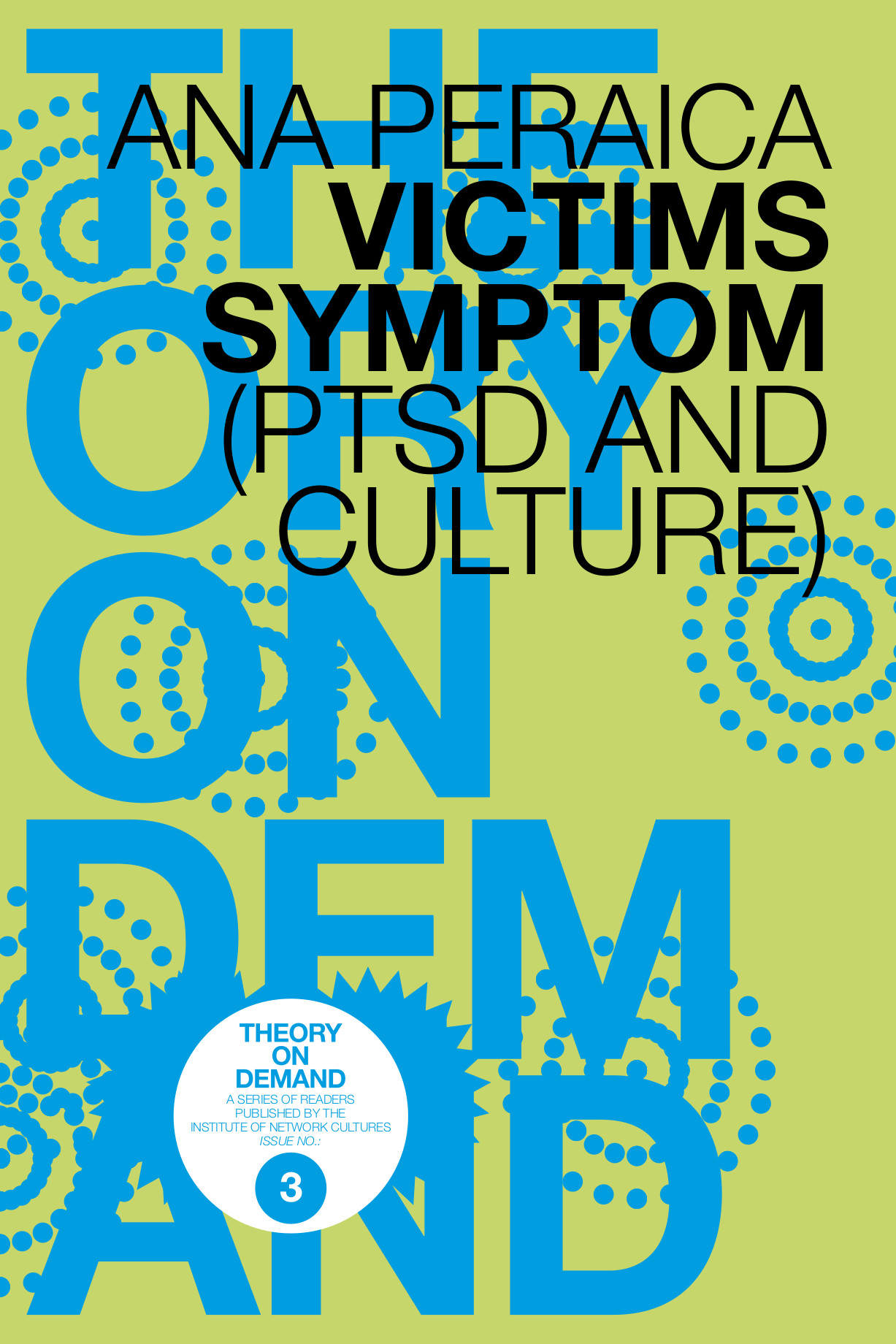Ana Peraica (ed.): Victims Symptom: PTSD and Culture (2009)
Filed under book | Tags: · media, memorial, memory, therapy, trauma, war

“Victims’ Symptom is a collection of interviews, essays, artists’ statements and glossary definitions, which was originally launched as a Web project (http://victims.labforculture.org). Produced in 2007, the project brought together cases related to past and current sites of conflict such as Srebrenica, Palestine, and Kosovo reporting from different (and sometimes conflicting) international viewpoints. The Victims Symptom Reader collects critical concepts in media victimology and addresses the representation of victims in economies of war.”
With texts by Sezgin Boynik, Adila Laidi Hanieh, Geert Lovink, Ana Peraica, and Stevan Vuković. Interviews by Ana Peraica (with Enrique Arroyo, Noam Chomsky, Agricola da Cologne, Anur Hadžiomerspahic, Joseph de Lappe) and Marko Stamenkovic (with Peter Fuchs, Jonas Staal, Carlos Motta, Neery Melkonian and Tomas Tomlinas). Artists’ statements by Mauricio Arango, Alejandro Duque, Andreja Kuluncic, Marko Peljhan, and
Martha Rosler. Glossary by Tihana Jendricko and Tina Peraica.
Publisher Institute of Network Cultures, Amsterdam, 2009
Theory on Demand series, 3
Creative Commons BY-NC-ND 3.0 Netherlands License
ISBN 9789078146117
PDF (updated on 2018-7-26)
Comment (0)Neil Rhodes, Jonathan Sawday (eds.): The Renaissance Computer: Knowledge Technology in the First Age of Print (2000)
Filed under book | Tags: · history of technology, hypertext, knowledge, memory, print, renaissance, storage, technology

In the fifteenth century the printing press was the ‘new technology’. The first ever information revolution began with the advent of the printed book, enabling Renaissance scholars to formulate new ways of organising and disseminating knowledge.
As early as 1500 there were already 20 million books in circulation in Europe. How did this rapid explosion of ideas impact upon the evolution of new disciplines?
The Renaissance Computer looks at the fascinating development of new methods of information storage and retrieval which took place at the very beginning of print culture. And it asks some crucial questions about the intellectual conditions of our own digital age. A dazzling array of leading experts in Renaissance culture explore topics of urgent significance today, including:
* the contribution of knowledge technologies to state formulation and national identity
* the effect of multimedia, orality and memory on education
* the importance of the visual display of information and how search engines reflect and direct ways of thinking.
Publisher Routledge, 2000
ISBN 0415220637, 9780415220637
212 pages
Roy Ascott (ed.): Reframing Consciousness: Art, Mind and Technology (1999)
Filed under book | Tags: · art, chaos theory, consciousness, cyberspace, electronic art, hypermedia, interface, memory, science, technology, telematics, telepresence, virtual reality

We are in the middle of a process of complex cultural transformation, but to what extent is this matched by the transformation in the way we see ourselves? This book covers a wide-ranging discussion on the interaction between Art, Science and Technology, and goes on to challenge assumptions about ‘reality’.
Loosely themed around four key elements of Mind, Body, Art and Values, the editor leads the investigation through the familiar territories of interactive media and artificial life, combining them with new and ancient ideas about creativity and personal identity.The contributing authors number over sixty highly respected practitioners and theorists in art and science, bringing to the subject a stimulating diversity of approach and a rich background of knowledge.
Art has long been preoccupied with questions involving the mind and consciousness. But it is fast finding that new technology, creatively applied, brings new possibilities to bear. This volume provides a strong foundation for the debates that are sure to follow in this field.
Publisher Intellect Books, 1999
ISBN 1841500135, 9781841500133
314 pages
PDF (updated on 2012-7-24)
Comment (0)
